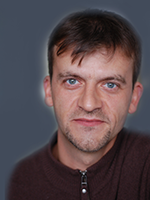I have a Degree in Physics (Acoustics) and a Master in Biomedical and Clinical Engineering from the Katholieke Universiteit Leuven (KULeuven). In 1996 I started working at the Belgian Institute for Space Aeronomy (BIRA-IASB). In 2001 I obtained a PhD in Physics on the subject of the data exploitation of the Occultation Radiometer (ORA), a solar occultation instrument onboard ESA's EURECA platform that was proposed by our institute. In orbit in the period 1992-1993, it beautifully captured the microphysical evolution and the global transport of the stratospheric sulphate aerosols that resulted from the Mt. Pinatubo volcanic eruption (Philippines, 1991). During this work, I developed a special affinity for:
- all types of atmospheric particles (stratospheric aerosols, mineral dust, noctilucent clouds, Polar Stratospheric Clouds, cirrus clouds)
- their optical behaviour (theory and numerical modelization)
- their microphysical evolution (nucleation, coagulation, evaporation, sedimentation, ...)
Furthermore, remote sensing of atmospheres involves numerical techniques to derive atmospheric knowledge from satellite measurements and therefore I've become experienced in:
- retrieval/inverse theory in general
- modelization of instrument response (detectors, optics)
- the modelization of light propagation in atmospheres (ray tracing, radiative transfer)
Following my Phd, I've been involved in a variety of satellite projects for Earth atmospheric observation, including:
- GOMOS (stellar occultation) on ESA's Envisat mission
- ACE (solar occultation) on the Canadian SciSat-1 mission
- VISION (solar occultation) on the PICASSO Cubesat (BIRA-IASB)
- ALTIUS (solar/stellar/lunar/planetary occultation, limb scatter; to be launched) (BIRA-IASB)
In the period from 2010-2020, I was the local Science team leader of the team that proposed the ALTIUS project. It was accepted as an official ESA Earth Watch mission in 2012.
In 2022, I left Earth and decided to join forces with the Planetary Aeronomy team at BIRA-IASB, looking forward to explore the universe. Currently, I'm involved with the team's main satellite projects, NOMAD/TGO (Mars), and the future Venspec-H instrument that is part of ESA's EnVision mission to Venus. Both instruments represent a continuation of my previous work on aerosols (Martian dust and ice clouds; Venus clouds and haze). In this context I regained a particular interest in polarimetric remote sensing.







